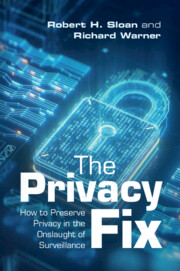Book contents
- The Privacy Fix
- The Privacy Fix
- Copyright page
- Contents
- Figures
- Tables
- Preface
- 1 Surveillance and Self-Realization
- 2 Artificial Intelligence-Enhanced Surveillance
- 3 Social Roles, Common Knowledge, and Coordination
- 4 Coordination Norms
- 5 Notice and Choice: The Allure and the Illusion
- 6 The Threat of Collapse, The Prospects of Resistance
- 7 Acquiescence
- 8 Accept or Take Control?
- 9 Regulating Artificial Intelligence
- Conclusion
- Index
9 - Regulating Artificial Intelligence
Published online by Cambridge University Press: 08 October 2021
- The Privacy Fix
- The Privacy Fix
- Copyright page
- Contents
- Figures
- Tables
- Preface
- 1 Surveillance and Self-Realization
- 2 Artificial Intelligence-Enhanced Surveillance
- 3 Social Roles, Common Knowledge, and Coordination
- 4 Coordination Norms
- 5 Notice and Choice: The Allure and the Illusion
- 6 The Threat of Collapse, The Prospects of Resistance
- 7 Acquiescence
- 8 Accept or Take Control?
- 9 Regulating Artificial Intelligence
- Conclusion
- Index
Summary
We show how to create an informational norm that constrains the use of proxies in AI-driven surveillance. The norm creates privacy in public by implementing conditions on the flow of information that control the use of that information as proxy variables. There are a variety of possible conditions. The task is to choose one that implements an acceptable tradeoff between informational privacy and information processing. The norm we propose ensures that the use of proxies is fair and to that extent implements an acceptable tradeoff between informational privacy and information processing. There is, of course, more to finding such a tradeoff than just ensuring that the use of proxies is fair, and the process we describe creates a forum for addressing tradeoff issues in general. Our focus for the moment, however, is on fairness. The example of Sally from Chapter 2 illustrates the questions that arise. Sally’s car insurance premiums increase as a result of her bankruptcy.
Keywords
- Type
- Chapter
- Information
- The Privacy FixHow to Preserve Privacy in the Onslaught of Surveillance, pp. 181 - 203Publisher: Cambridge University PressPrint publication year: 2021

